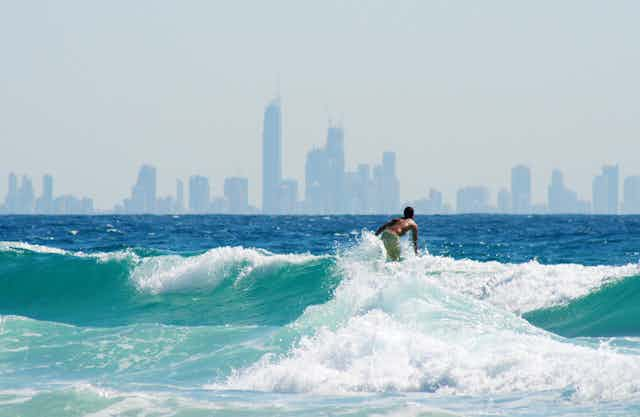The Newman-led Liberal-National Party (LNP) government in Queensland is aiming to boost economic growth by focusing on development in four areas; agriculture, tourism, mining and residential/commercial/industrial.
The Queensland Government’s new Draft Coastal Protection State Planning Regulatory Provision (SPRP), gazetted on the 8th October is designed to complement the growth policy by removing planning and regulatory barriers.
The SPRP, which will remain in place for 12 months from the 8th October 2012 or until repealed, specifically refers to the following types of development: aquaculture, dredging below the high-water mark to support industrial development and native vegetation protection affecting commercial and residential development.
In the case of aquaculture there are some appropriate words about preventing impacts on coastal resources and environments. Nevertheless the discharge of wastewater is allowable if there is “no feasible alternative”.
Settling ponds for the treatment of effluent from aquaculture fish tanks are prone to inundation, and don’t always work well. There may indeed be no feasible alternative but to discharge into coastal waters. Aquaculture should be regulated to operate with closed systems to prevent any intentional or inadvertent release of contaminated water, especially within the Great Barrier Reef World Heritage Area (GBRWHA), whose boundary is low water mark.
In the case of dredging, the new policy aims to prevent impacts on water quality, taking account of toxins in sediments, as well as on fishing through removal or smothering of sea grass beds. These same controls were in place in the case of the dredging of Gladstone Harbour and the effects of dredging are easily underestimated - illustrated by the fact that the sediment plume at Gladstone reached 35km to seaward of the dredging and in the GBRWHA.
In the Gladstone Harbour case the State’s Coordinator General ruled that Gladstone fishers be compensated for lost livelihoods. Yet no compensatory payments have been forthcoming from the state, even though harbour fishing has suffered a severe downturn during the dredging program.
Confidence that the Queensland government can control dredging impacts and that it will make reparations where there are negative socio-economic consequences, has been seriously undermined over the last 12 months.
Land use planning has up to now failed to prevent massive loss of native vegetation in Queensland’s coastal zone. This is illustrated by the precipitous decline in koala populations, and the consequent 2012 listing of the species as vulnerable in Queensland under the EPBC Act 1999 by the Commonwealth.
Under the SPRP land below high tide is to be maintained in its natural state; but it may be reclaimed where it is required for reclamation within a canal estate or marina. The policy states that canal estates will be subject to environmental controls. But in the past they have been the subject of trenchant criticism on environmental grounds. These include the removal of wetlands in their construction, their propensity to lower water quality and the problems of dealing with acid sulphate soils. Canal estates have been banned in New South Wales and Victoria. Attempts to revive them in Queensland will surely meet with a great deal of opposition.
Most residential and commercial development will inevitably take place in Queensland’s coastal zone. Moreover we may experience a faster loss of vegetation because the SPRP has a let-out clause that states that Queensland’s native coastal vegetation will be retained “wherever practical”.

Traditionally we have relied upon the states to adopt policies to limit the environmental impacts of growth. Now Queensland has moved to ramp up its development credentials by strongly indicating it will revisit these restraints. This means that we will be relying more heavily on Canberra to prevent unacceptable impacts on coastal and maritime environments. The Commonwealth has countervailing powers to act and prevent or modify development in two major instances: first where there will be impacts on the Great Barrier Reef and second where species listed as endangered are affected.
It is expected that Environment Minister Tony Burke will soon find on his desk referrals on proposed large aquaculture projects, dredging within the GBRWHA, and coastal development that affects the listed koala. Firmness from the Commonwealth in dealing with these issues will be in Australia’s long-term interests; however expect a bellicose response from Brisbane.

